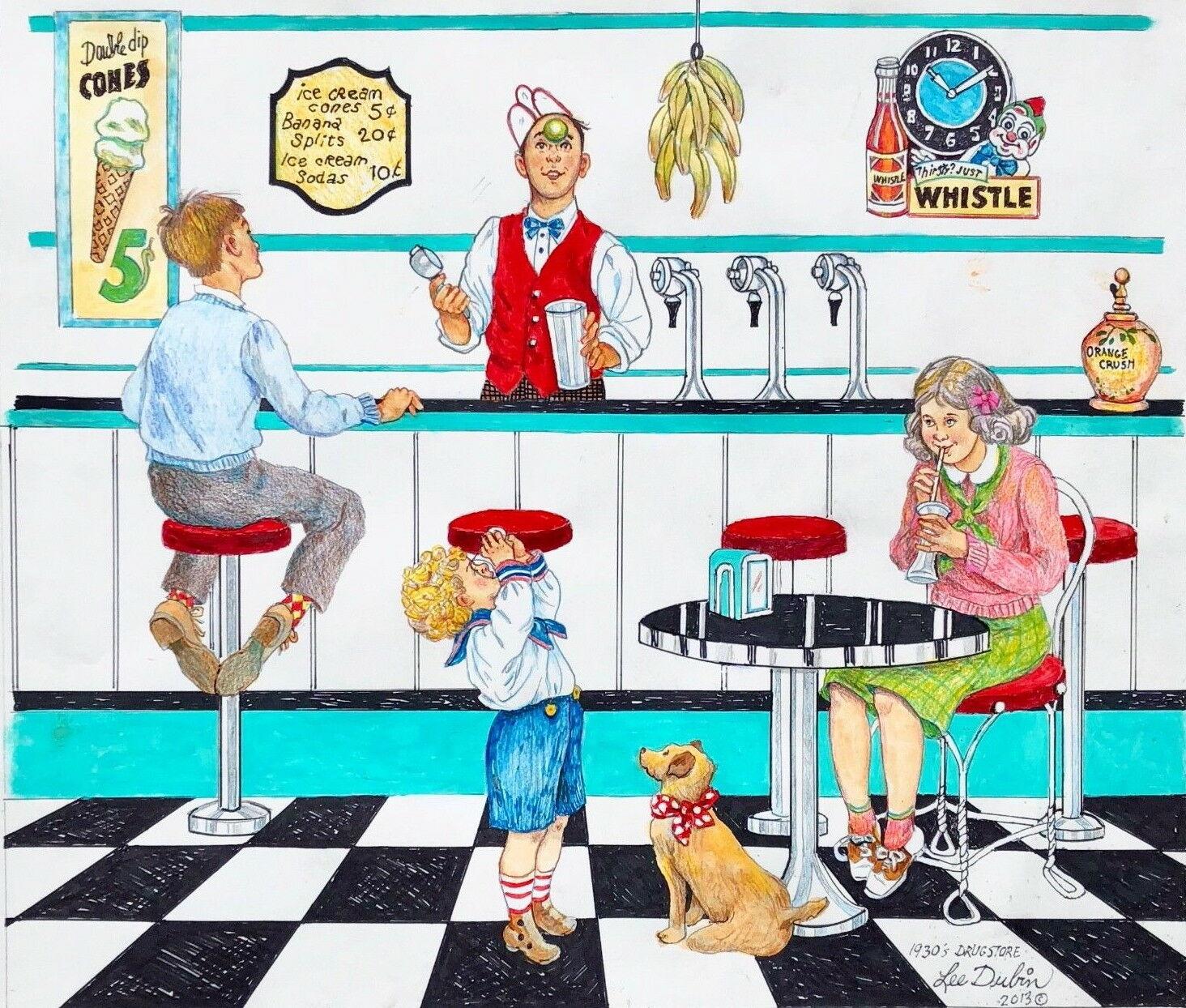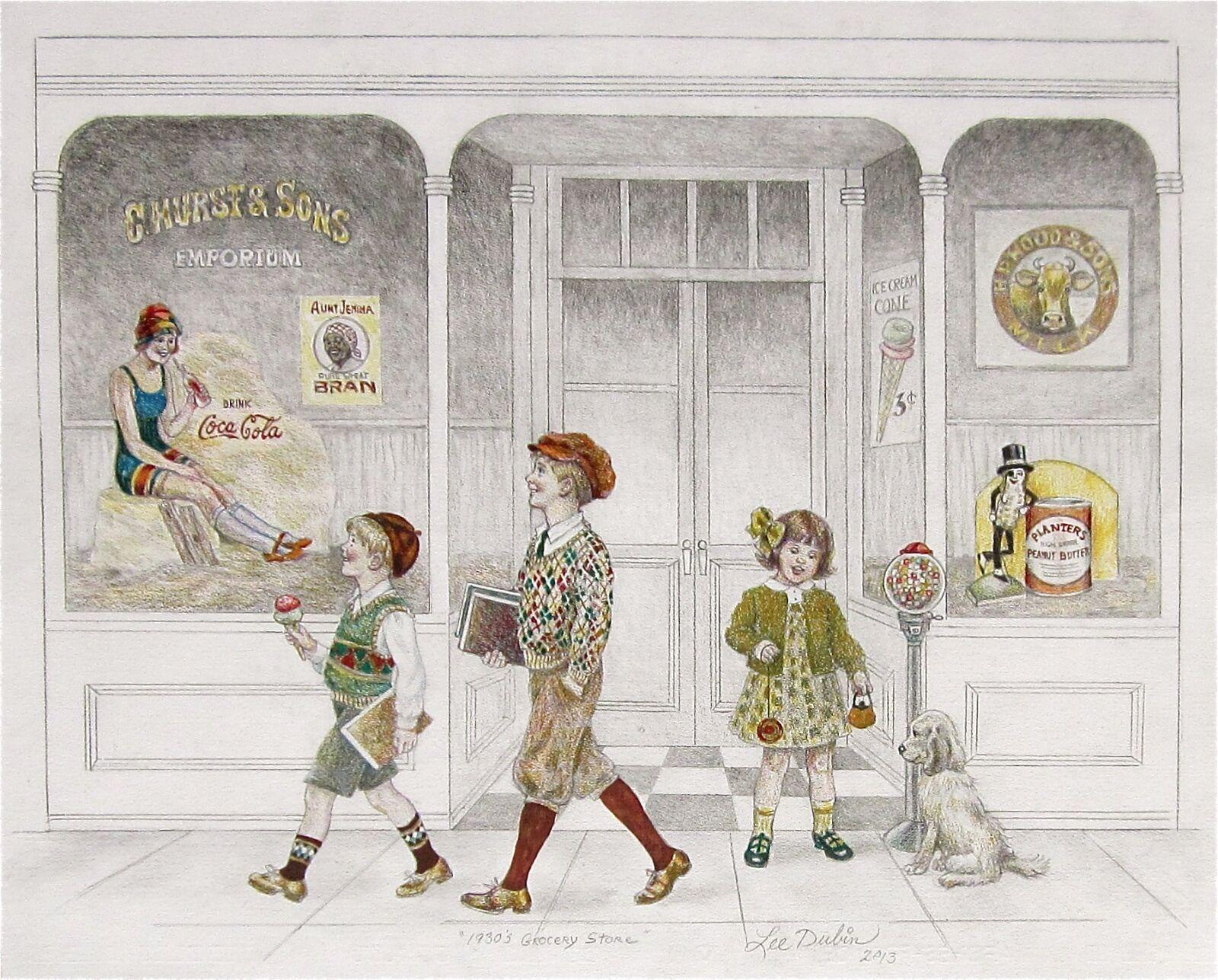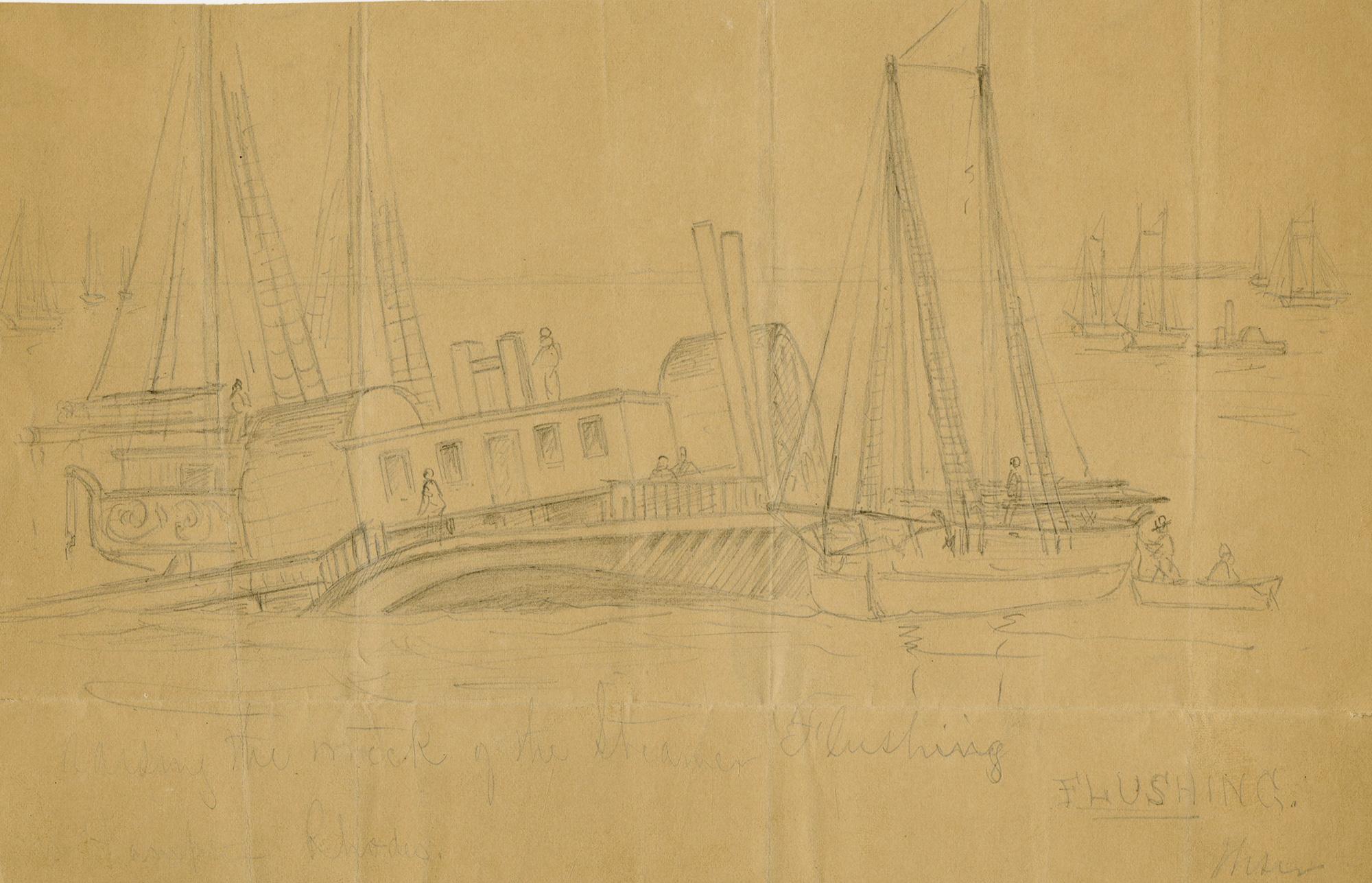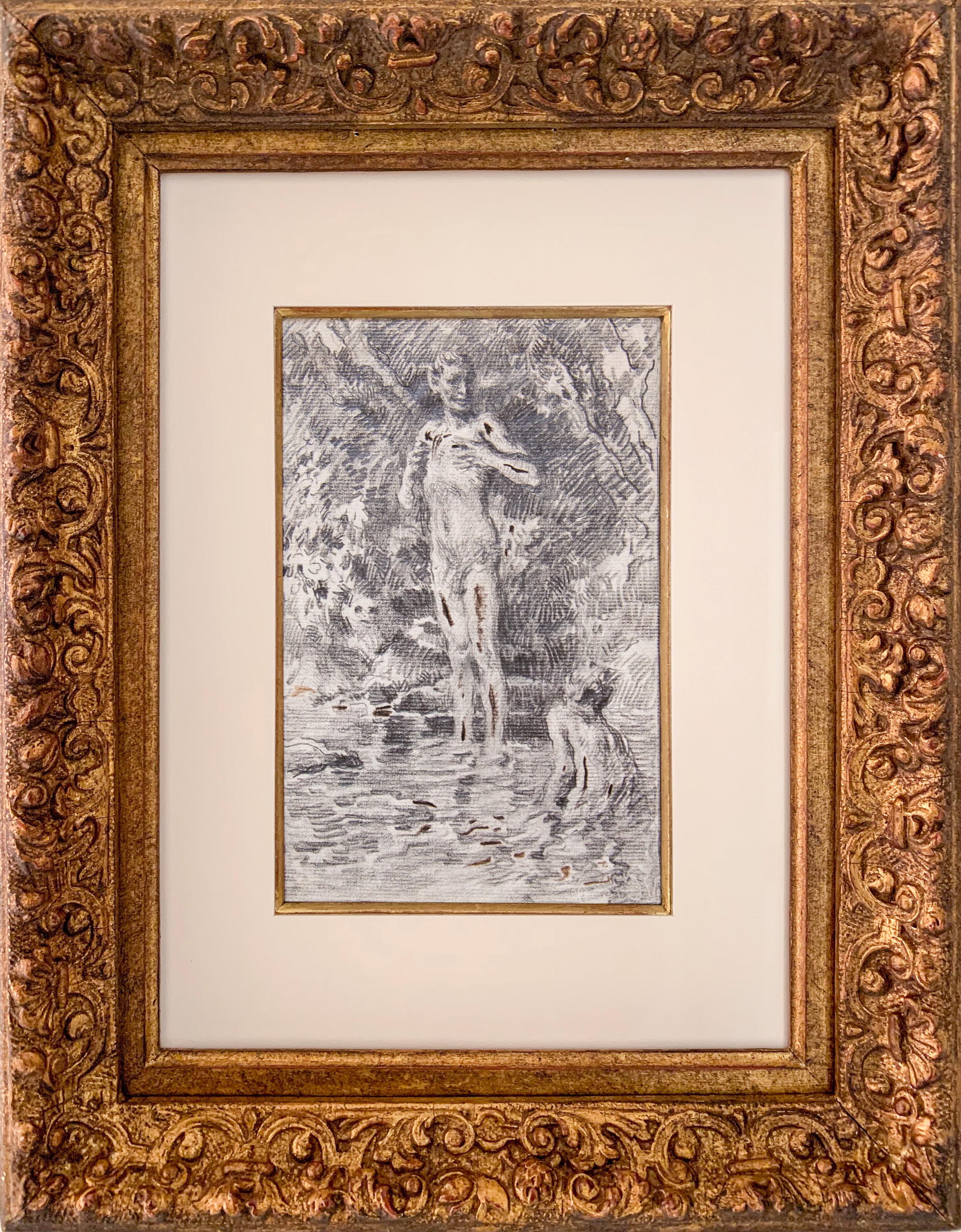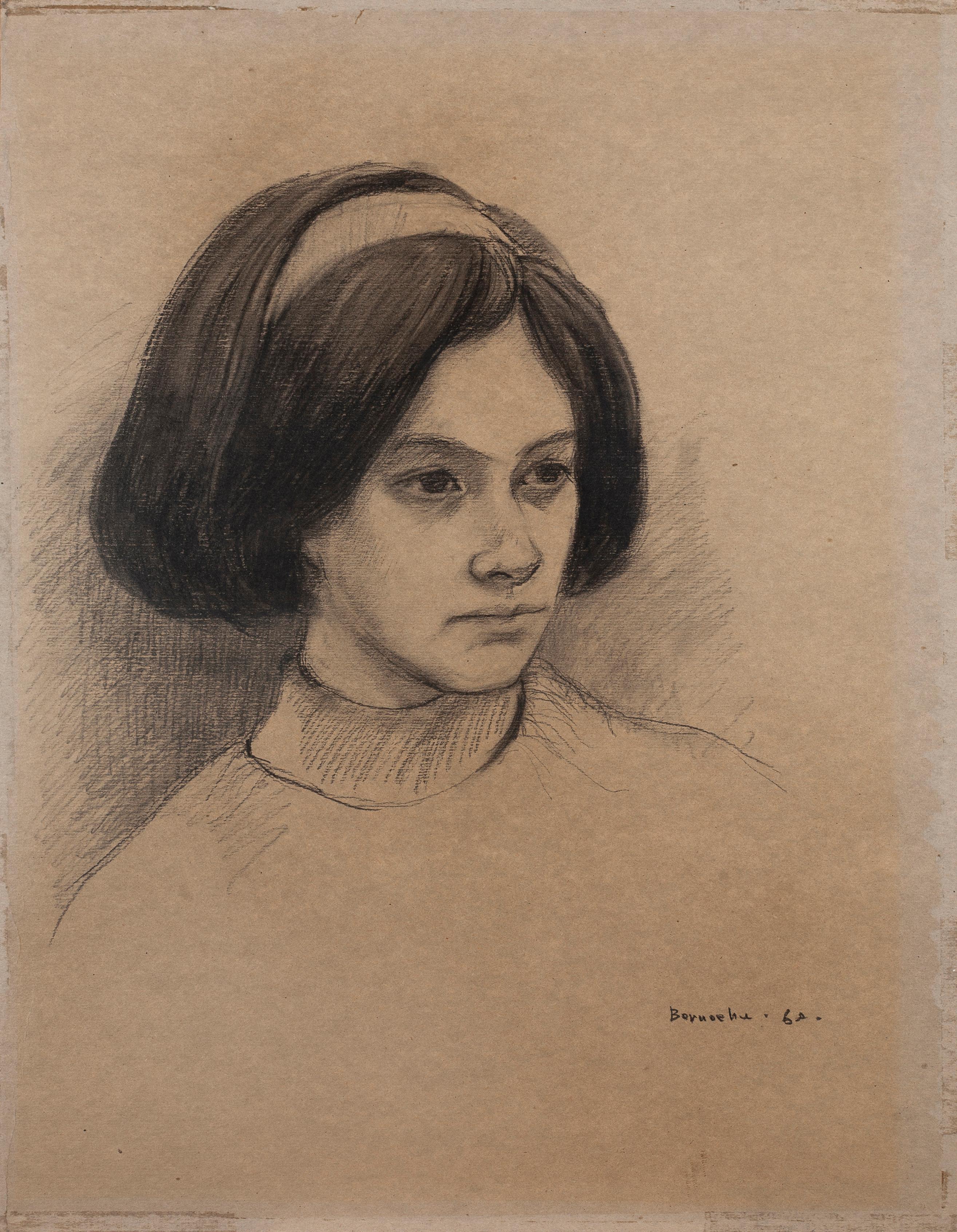Items Similar to Woman with Bicycle: Two Views
Want more images or videos?
Request additional images or videos from the seller
1 of 7
Frank DuveneckWoman with Bicycle: Two Views1890's
1890's
About the Item
Woman with Bicycle: Two Views
Graphite on paper, c. 1890
Unsigned
Graphite study of standing female nude verso
Provenance:
Rookwood Pottery Factory Collection, Cincinnati
Spanierman Gallery, New York (label)
Drawings from the sketchbook are in the collections of the Munson Williams Proctor Institute in Utica, New York and the Picker Art Gallery, Colgate University, Hamilton, New York.
A sister drawing from the same sketchbook was sold at Cowman’s Auction, Cincinnati, October 6, 2018. Accompanied by a letter from the Spanierman Gallery, dated 1997, stating that the drawing is from a sketchbook that was held in the Rookwood Factory Collection.
Sister drawing provenance: Provenance: Terry DeLapp Gallery, Cambria, California
Spanierman Gallery, New York City
Rookwood Pottery Factory Collection, Cincinnati, Ohio
Frank Duveneck
(1848-1919)
Born in Covington, Kentucky, Frank Duveneck had the birth name of Frank Decker. He became a well-trained academic painter whose work ranged from single figures in interiors to plein air canvases of figures in landscape and often included the depiction of low-life persons. His styles included Realism, Social Realism, and Impressionism, and his work was ever influenced by the dark tones and vigorous brush-strokes of the Munich style, which he learned at the Munich Academy in the 1870s. Art historian Matthew Baigell described Duveneck's mature style as having "loose highlights brushed over ruggedly blocked-out forms emerging from a richly suggestive chiaroscuro."
He apprenticed to a church decorator, Wilhelm Lamprecht, in Cincinnati, and worked in Catholic Churches in Covington, Cincinnati, Latrobe, Pennsylvania and Quebec, Canada. At age 22, entered the Royal Academy of Munich where he intended to further his interest in church decoration but instead veered to fine-art painting on canvas. One of his most influential teachers was realist Wilhelm von Diez, and Duveneck, also impressed by the realism of French painter Gustave Courbet, became known for adopting this revolutionary approach with rich brushwork. In Munich, Duveneck shared a studio with William Merritt Chase.
Returning to Cincinnati, he painted portraits and decorated churches and also taught art classes. At first he did not gain much attention, but an exhibition in Boston in 1875 gained him good attention.
In 1875, he went back to Europe and opened an art school in Munich and also in Poling in Bavaria, and many Americans who became known as "Duveneck's Boys," studied with him. Several years later, he opened his school in Italy where he spent the winters in Florence and the summers in Venice. In 1879, he and his followers went to Venice where he began etching and briefly shared a studio with James Whistler in order to learn from him. He also did sculpture. During this period, his painting changed drastically from dark interiors with heavy, impasto paint to outdoor, plein air painting in much lighter colors giving the appearance of sunlight. Among his students was the future Impressionist painter John Henry Twachtmann, and also Elizabeth Boott, whom he married in 1886 and who died two years later.
In 1888, he returned to Cincinnati where from 1900 he taught at the Cincinnati Art Academy. He spent the summers in Gloucester, Massachusetts painting impressionistic landscapes and seascapes, and he also made many return trips to Italy, France, and Germany.
The Cincinnati Museum is the major recipient of his paintings as he took a strong, active interest in that entity.
Courtesy: Ask Art
- Creator:Frank Duveneck (1848-1919, American)
- Creation Year:1890's
- Dimensions:Height: 6 in (15.24 cm)Width: 9.38 in (23.83 cm)
- Medium:
- Movement & Style:
- Period:
- Condition:
- Gallery Location:Fairlawn, OH
- Reference Number:
About the Seller
5.0
Recognized Seller
These prestigious sellers are industry leaders and represent the highest echelon for item quality and design.
Platinum Seller
These expertly vetted sellers are 1stDibs' most experienced sellers and are rated highest by our customers.
Established in 1978
1stDibs seller since 2013
718 sales on 1stDibs
Typical response time: 1 hour
Associations
International Fine Print Dealers Association
- ShippingRetrieving quote...Ships From: Fairlawn, OH
- Return PolicyA return for this item may be initiated within 10 days of delivery.
More From This SellerView All
- Seated Woman, Left Hand to ChinBy William H. BaileyLocated in Fairlawn, OHSeated Woman, Left Hand to Chin Graphite on laid paper, 1984 Signed and dated in pencil (see photo) Provenance: Donald Morris Gallery, Inc. Birmingham, MI ...Category
1980s American Realist Figurative Drawings and Watercolors
MaterialsGraphite
- Untitled (Seated Young Woman)Located in Fairlawn, OHUntitled (Seated Young Woman) Graphite on Veritable Papier d'Arches wove paper, 1970 Signed and dated lower right (see photo) Condition: Excellent Image/sheet size: 15 x 11 1/4 inch...Category
1970s American Realist Figurative Drawings and Watercolors
MaterialsGraphite
- Female Torso, NudeBy Asa CheffetzLocated in Fairlawn, OHNude Female Torso Charcoal on paper, c. 1920 Stamped and initialed in pencil "Asa Cheffetz/A.D.C" Estate signature by wife, A.D.C. Exhibited: Museum of F...Category
1920s American Realist Nude Drawings and Watercolors
MaterialsCharcoal
- Eileen LakeBy Adolf Arthur DehnLocated in Fairlawn, OHEileen Lake Crayon on paper, early1930's Initialed in pencil lower right (see photo) Titled and annotated verso "Eileen Lake, early 1930s girlfriend" Note: Eileen Hall Lake was an American poet and Adolf Dehn's girlfriend in the early 1930s. Provenance: Estate of the artist By descent Adolf Dehn, American Watercolorist and Printmaker, 1895-1968 Adolf Dehn was an artist who achieved extraordinary artistic heights, but in a very particular artistic sphere—not so much in oil painting as in watercolor and lithography. Long recognized as a master by serious print collectors, he is gradually gaining recognition as a notable and influential figure in the overall history of American art. In the 19th century, with the invention of the rotary press, which made possible enormous print runs, and the development of the popular, mass-market magazines, newspaper and magazine illustration developed into an artistic realm of its own, often surprisingly divorced from the world of museums and art exhibitions, and today remains surprisingly overlooked by most art historians. Dehn in many regards was an outgrowth of this world, although in an unusual way, since as a young man he produced most of his illustrative work not for popular magazines, such as The Saturday Evening Post, but rather for radical journals, such as The Masses or The Liberator, or artistic “little magazines” such as The Dial. This background established the foundation of his outlook, and led later to his unique and distinctive contribution to American graphic art. If there’s a distinctive quality to his work, it was his skill in introducing unusual tonal and textural effects into his work, particularly in printmaking but also in watercolor. Jackson Pollock seems to have been one of many notable artists who were influenced by his techniques. Early Years, 1895-1922 For an artist largely remembered for scenes of Vienna and Paris, Adolf Dehn’s background was a surprising one. Born in Waterville, Minnesota, on November 22, 1895, Dehn was the descendent of farmers who had emigrated from Germany and homesteaded in the region, initially in a one-room log cabin with a dirt floor. Adolf’s father, Arthur Clark Dehn, was a hunter and trapper who took pride that he had no boss but himself, and who had little use for art. Indeed, during Adolf’s boyhood the walls of his bedroom and the space under his bed were filled with the pelts of mink, muskrats and skunks that his father had killed, skinned and stretched on drying boards. It was Adolf’s mother, Emilie Haas Dehn, a faithful member of the German Lutheran Evangelical Church, who encouraged his interest in art, which became apparent early in childhood. Both parents were ardent socialists, and supporters of Eugene Debs. In many ways Dehn’s later artistic achievement was clearly a reaction against the grinding rural poverty of his childhood. After graduating from high school in 1914 at the age of 19—an age not unusual in farming communities at the time, where school attendance was often irregular—Dehn attended the Minneapolis School of Art from 1914 to 1917, whose character followed strongly reflected that of its director, Munich-trained Robert Kohler, an artistic conservative but a social radical. There Dehn joined a group of students who went on to nationally significant careers, including Wanda Gag (later author of best-selling children’s books); John Flanagan (a sculptor notable for his use of direct carving) Harry Gottlieb (a notable social realist and member of the Woodstock Art Colony), Elizabeth Olds (a printmaker and administrator for the WPA), Arnold Blanch (landscape, still-life and figure painter, and member of the Woodstock group), Lucille Lunquist, later Lucille Blanch (also a gifted painter and founder of the Woodstock art colony), and Johan Egilrud (who stayed in Minneapolis and became a journalist and poet). Adolf became particularly close to Wanda Gag (1893-1946), with whom he established an intense but platonic relationship. Two years older than he, Gag was the daughter of a Bohemian artist and decorator, Anton Gag, who had died in 1908. After her husband died, Wanda’s mother, Lizzi Gag, became a helpless invalid, so Wanda was entrusted with the task of raising and financially supporting her six younger siblings. This endowed her with toughness and an independent streak, but nonetheless, when she met Dehn, Wanda was Victorian and conventional in her artistic taste and social values. Dehn was more socially radical, and introduced her to radical ideas about politics and free love, as well as to socialist publications such as The Masses and The Appeal to Reason. Never very interested in oil painting, in Minneapolis Dehn focused on caricature and illustration--often of a humorous or politically radical character. In 1917 both Dehn and Wanda won scholarships to attend the Art Students League, and consequently, in the fall of that year both moved to New York. Dehn’s art education, however, ended in the summer of 1918, shortly after the United States entered World War I, when he was drafted to serve in the U. S. Army. Unwilling to fight, he applied for status as a conscientious objector, but was first imprisoned, then segregated in semi-imprisonment with other Pacifists, until the war ended. The abuse he suffered at this time may well explain his later withdrawal from taking political stands or making art of an overtly political nature. After his release from the army, Dehn returned to New York where he fell under the spell of the radical cartoonist Boardman Robinson and produced his first lithographs. He also finally consummated his sexual relationship with Wanda Gag. The Years in Europe: 1922-1929 In September of 1921, however, he abruptly departed for Europe, arriving in Paris and then moving on to Vienna. There in the winter of 1922 he fell in love with a Russian dancer, Mura Zipperovitch, ending his seven-year relationship with Wanda Gag. He and Mura were married in 1926. It was also in Vienna that he produced his first notable artistic work. Influenced by European artists such as Jules Pascin and Georg Grosz, Dehn began producing drawings of people in cafes, streets, and parks, which while mostly executed in his studio, were based on spontaneous life studies and have an expressive, sometimes almost childishly wandering quality of line. The mixture of sophistication and naiveté in these drawings was new to American audiences, as was the raciness of their subject matter, which often featured pleasure-seekers, prostitutes or scenes of sexual dalliance, presented with a strong element of caricature. Some of these drawings contain an element of social criticism, reminiscent of that found in the work of George Grosz, although Dehn’s work tended to focus on humorous commentary rather than savagely attacking his subjects or making a partisan political statement. Many Americans, including some who had originally been supporters of Dehn such as Boardman Robinson, were shocked by these European drawings, although George Grocz (who became a friend of the artist in this period) admired them, and recognized that Dehn could also bring a new vision to America subject matter. As he told Dehn: “You will do things in America which haven’t been done, which need to be done, which only you can do—as far at least as I know America.” A key factor in Dehn’s artistic evolution at this time was his association with Scofield Thayer...Category
1930s American Realist Figurative Drawings and Watercolors
MaterialsOil Crayon
- Untitled (Joe Louis knocking out Max Schmeling in 1938 rematch)By Fletcher MartinLocated in Fairlawn, OHUntitled (Joe Louis knocking out Max Schmeling in 1938 rematch) Pen and ink with wash on heavy wove sketchbook paper, 1938 Signed lower right: Fletcher Martin Directly related to Martin's famous painting of 1942 entitled "Lullaby", which was also used in the lithograph of the same name. (see photo) The drawing depicts the third and final knockdown of Max Schmeling in their rematch of 1938. Condition: Mat staining at the edges of the sketchbook page edges Toning to verso from previous framing. Does not affect framed presentation "It was here that Louis first used sport to bridge America's cavernous racial divide. With Hitler on the march in Europe and using Schmeling's victory over Louis as proof of “Aryan supremacy,” anti-Nazi sentiment ran high in the States. Louis had long grown accustomed to the pressures of representing his race but here the burdens were broader and deeper. Now he was shouldering the hopes of an entire nation. A few weeks before the match Louis visited the White House and U.S. President Franklin Delano Roosevelt, whose tenure lasted even longer than Louis' would, told him, “Joe, we need muscles like yours to beat Germany.” Those muscles certainly beat Schmeling on fight night...Category
1930s American Realist Figurative Drawings and Watercolors
MaterialsInk
- JazmenBy Sedrick HuckabyLocated in Fairlawn, OHJazmen Pen and ink on paper, 2013 Signed and titled lower right (see photo) Annotated: “I want to go to Dunbar,…because my friends are there…” Series: The 99% - Highland Hills Exhibited: Valley House Gallery, Everyday Glory, Dec. 4, 2013-Jan. 11, 2014 Illustrated: Everyday Glory, page 45 Condition: excellent Sheet size: 14 x 10 7/16 inches Provenance: Valley House Gallery (no. 18597) Sedrick Huckaby (b. 1975) Born in Fort Worth in 1975, Huckaby has been creating some form of art since his childhood. In 1995, he began his formal art studies at Texas Wesleyan University in Fort Worth. After a brief stay he transferred to Boston University, where he received a BFA degree. He then earned a MFA degree from Yale University in New Haven, Connecticut. Huckaby is known for his powerful use of color and his exploration of cultural roles and the heritage of the African American family. His work has evolved from portraiture to objects and interiors that venerate his personal family legacy rooted in Fort Worth, Texas. Portraying these familiar subjects on a large scale and pushing his use of materials, Huckaby defines the significance of family and tradition while touching on the subject of ethnographic stereotypes in our culture. For the past few years he has concentrated his efforts on a series of quilt paintings. One of the series he created is a tribute to both of his Grandmothers and a celebration of the African American quilting tradition. He used the actual quilts sewn by family members as models for his paintings. These quilts document significant events in his family history. According to Huckaby, the paintings represent an artistic family legacy. The colorful, rhythmic abstracted patterns come together like the musical notes in African American musician John Coltrane's famous jazz composition, A Love Supreme, from which the painting series acquired its name. He has earned national acclaim for his work over the past several years. Huckaby has received the 2001 Louis Comfort Tiffany Award...Category
2010s American Realist Figurative Drawings and Watercolors
MaterialsInk
You May Also Like
- Drugstore (1930s), Lee DubinBy Lee DubinLocated in Fairfield, CTArtist: Lee Dubin Title: Drugstore (1930s) Year: 2013 Medium: Watercolor and graphite on paper Size: 18 x 21 inches Condition: Excellent Inscription: Signed, titled, and dated in pen...Category
2010s American Realist Figurative Drawings and Watercolors
MaterialsGraphite, Color Pencil
- Grocery Store (1930s), Lee DubinBy Lee DubinLocated in Fairfield, CTArtist: Lee Dubin Title: Grocery Store (1930s) Year: 2013 Medium: Watercolor and graphite on paper Size: 19.5 x 24 inches Condition: Excellent Inscriptio...Category
2010s American Realist Figurative Drawings and Watercolors
MaterialsGraphite, Color Pencil
- Pencil Study #20Located in Columbia, MOPencil Study #20 2016 Graphite on paper 11 x 7 Jessica Keiser currently resides in New Haven, Connecticut. Keiser's style is Naturalistic, concerned with...Category
21st Century and Contemporary American Realist Figurative Drawings and W...
MaterialsGraphite
- Raising the wreck of the steamer Flushing at Hampton Roads, VirginiaLocated in Middletown, NYLikely a study for an illustration for Harper's Weekly, for which Wiser was a Civil War-era illustrator, focusing on shipwrecks and battles occurring along the mid-Atlantic coast. ...Category
Mid-19th Century American Realist Figurative Drawings and Watercolors
MaterialsArchival Paper, Graphite
- Forest Idyll Allegory drawingBy Francis Luis MoraLocated in Greenwich, CTFrancis Luis Mora is loved sketching and drawing and did so for almost every day of his career. This allegorical and very finished pencil drawing depicts a Faun in the forest. Poss...Category
Early 20th Century American Realist Figurative Drawings and Watercolors
MaterialsArchival Paper, Graphite
- Value Study of Woman's HeadLocated in Columbia, MOJerry Berneche (1932 - 2016) was a painter and draftsman of representational scenes and portraits featuring extraordinary color work and extremely detailed mark-making. Locally he is...Category
20th Century American Realist Figurative Drawings and Watercolors
MaterialsGraphite, Charcoal
